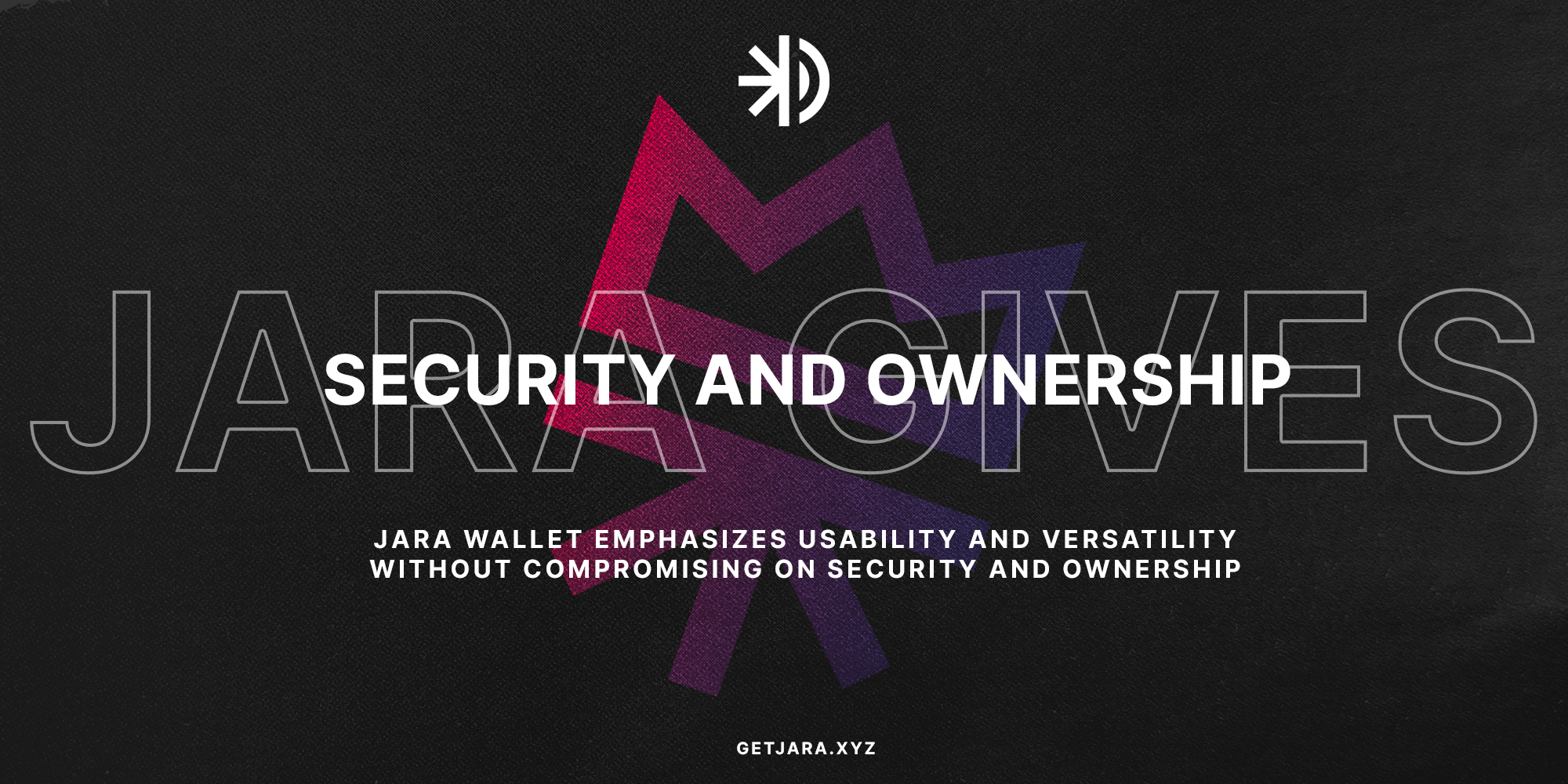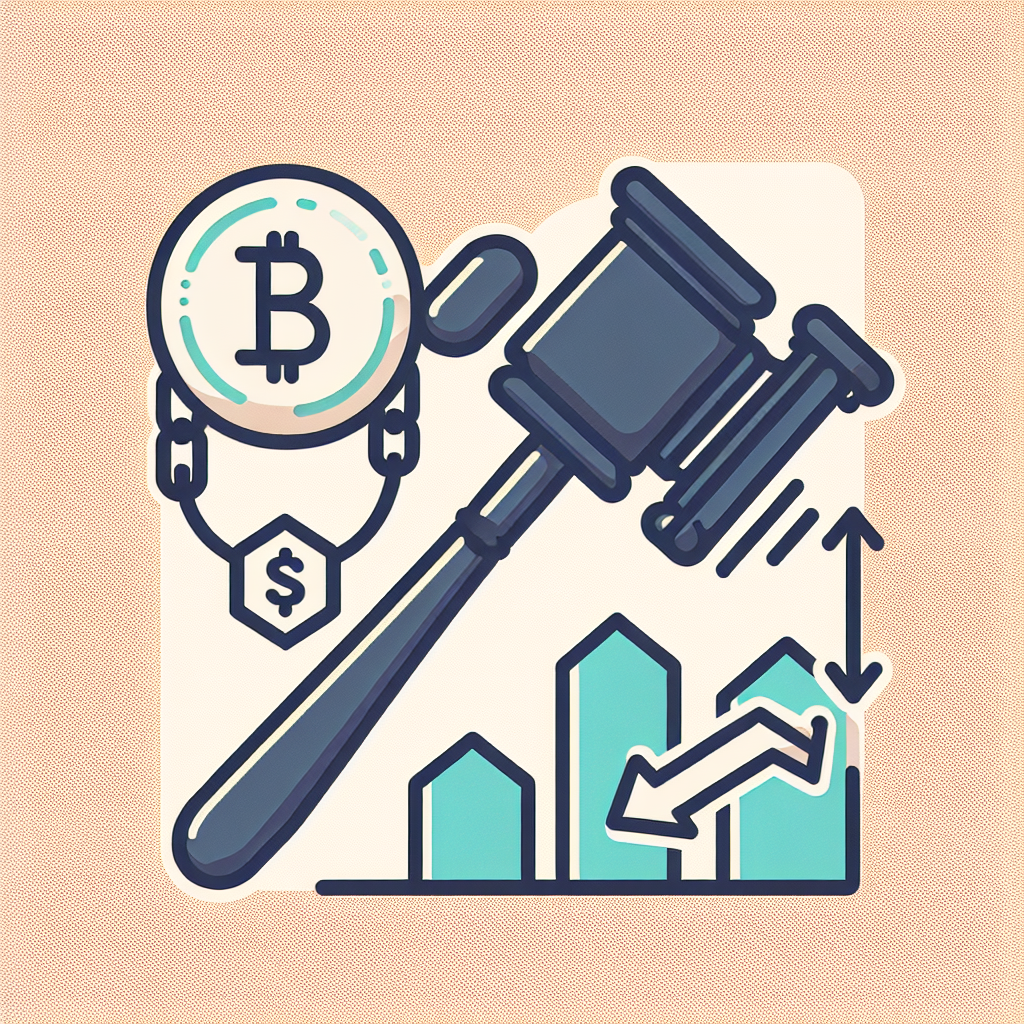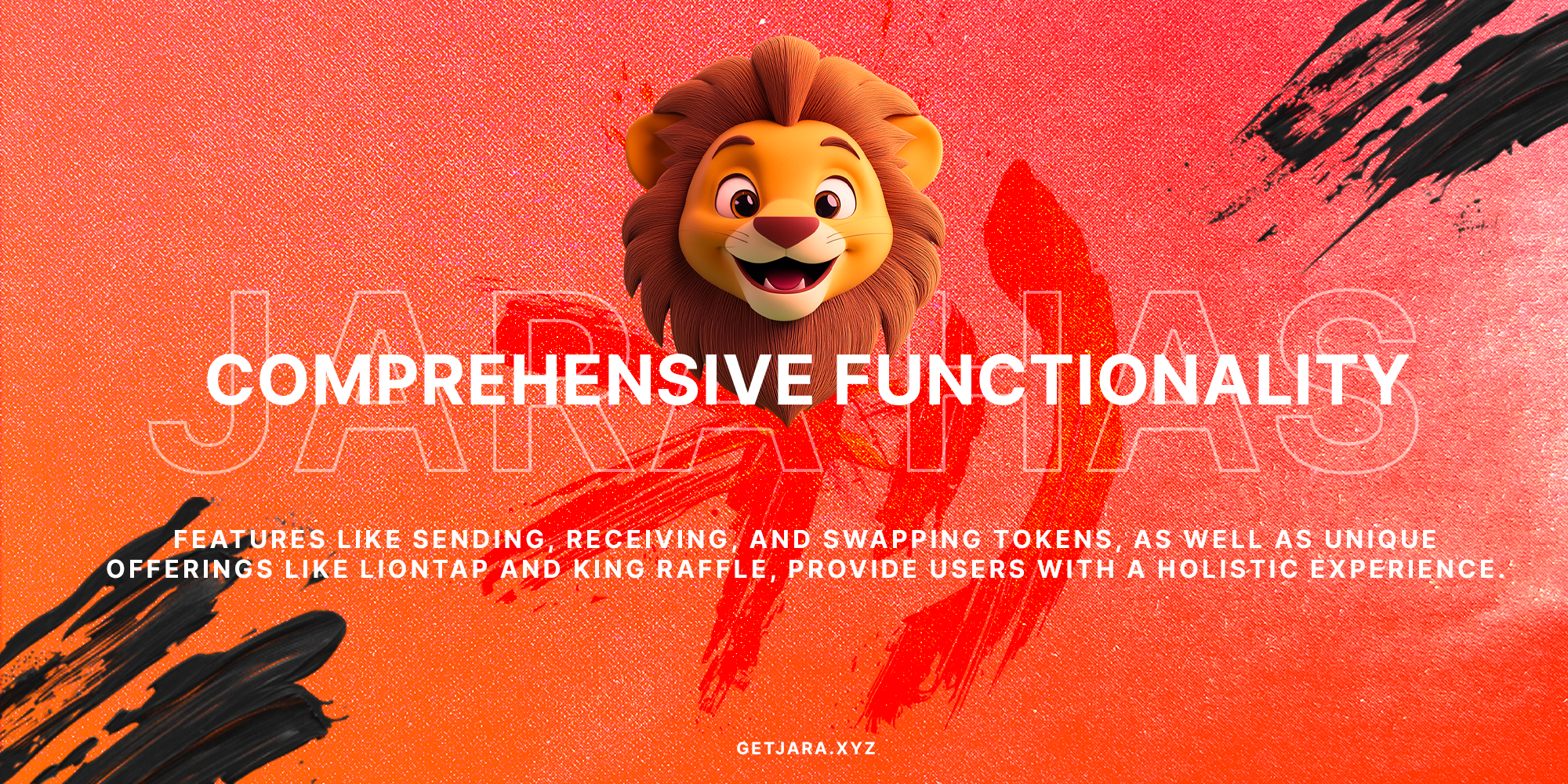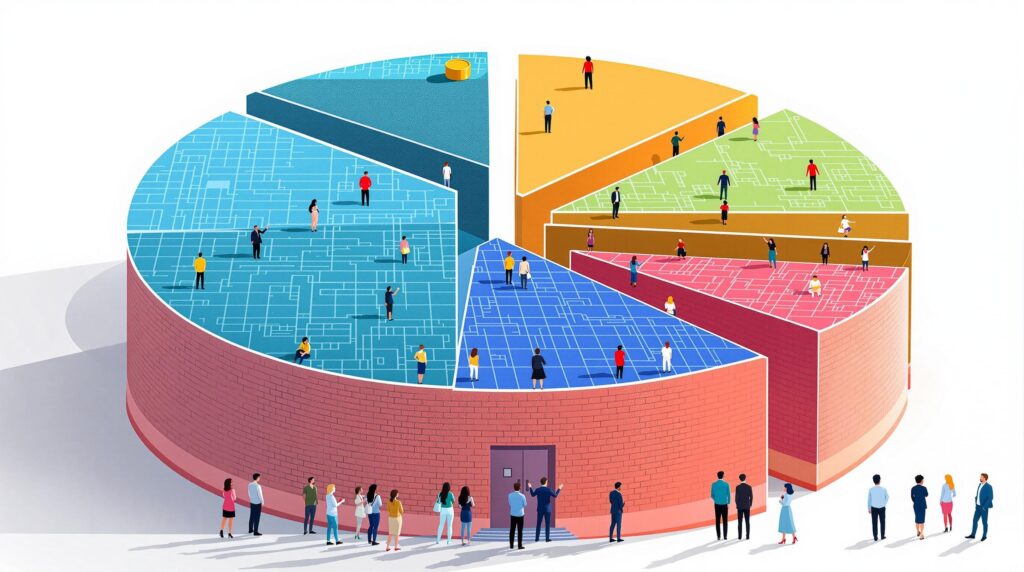Understanding Gas Fees in Smart Contracts
Gas fees are integral to blockchain operations, especially on platforms like Ethereum and Solana blockchains, where they fuel transactions and drive the execution of smart contracts. As the Ethereum network grows, understanding these fees becomes crucial for effectively managing transaction costs.
What Are Gas Fees?
What are gas fees? Gas fees are the costs associated with executing operations on the blockchain, specifically measured in Gwei. These fees are necessary to compensate network validators for processing transactions.
Gas fees work by serving as a financial incentive for miners to validate transactions and maintain the security of the Ethereum network. They act like fuel, ensuring that each operation on the blockchain is completed efficiently and securely.
Why Do Gas Fees Matter?
The importance of gas fees cannot be overstated when dealing with smart contracts and blockchain transactions. Gas fees prevent spam and malicious activities by imposing a cost for every action on the network, maintaining its integrity and efficiency. But, why should you care about gas fees?
- Transaction Validity: Gas fees are crucial for ensuring that transactions reach validators, who execute the computational steps necessary for processing them, providing network security.
- Network Efficiency: By attributing a cost to blockchain operations, gas fees help minimize unnecessary transactions, reducing network congestion and leading to faster processing times.
- User Accessibility: Understanding gas fees allows users to plan and optimize their transactions, ensuring accessibility to blockchain services without bearing excessive costs.
- Incentivizing Miners: Gas fees offer rewards for the miners and validators who uphold the blockchain’s security by verifying transactions.
Factors Influencing Gas Fees
Gas fees can fluctuate, often influenced by network conditions. When traffic increases, particularly during high-demand periods like NFT launches or popular DeFi applications, fees can soar, blocking small users from participating.
Gas prices depend on network demand: High demand leads to higher fees, as more users compete to have their transactions processed first.
Network congestion significantly impacts the availability of block space on Ethereum, sometimes causing fees to spike unexpectedly. Therefore, being aware of peak network hours can provide financial advantages.
Optimizing Gas Fees for Smart Contracts
Optimizing gas fees is particularly crucial in smart contract operations on platforms like Ethereum. By minimizing the gas costs, users can deploy and interact with smart contracts more cost-effectively.
- Efficient Coding: Use minimal computations and optimize logic to reduce gas consumption. Employ simple code and proven libraries.
- Timing: Execute transactions during off-peak hours to take advantage of lower fees.
- Batching Transactions: Combine multiple actions into a single transaction to reduce gas costs. This replicates purchasing in bulk – the more you compile, the less you pay overall.
- Layer 2 Solutions: Use secondary protocols for handling transactions off the main chain to minimize gas expenses.
$JARA empowers digital transactions, efficiently reducing gas fees, ensuring Africa’s digital asset economy can grow effectively.
Wondering how to proceed? Embrace strategies like those mentioned to optimize gas costs and dive into Africa’s booming digital transformation. With Jara, you are not just a spectator but a crucial part of Africa’s financial revolution.
Factors Influencing Gas Fees
Several elements affect the cost of gas fees, often making them volatile and challenging to predict without real-time tracking tools. Key factors include network demand, transaction size, and current Ethereum upgrades.
Network Demand and Its Fluctuations
Gas fees are significantly influenced by the demand on the network. Why? Consider the Ethereum network as a bustling highway. During peak traffic times, such as major DeFi operations or popular NFT drops, many users compete for limited space, causing fees to rise sharply. Think of it like rush hour, where everyone wants to get on the road at the same time. The Ethereum network behaves similarly; when more people want to transact, the gas fees go up due to increased competition for computational resources.
What are gas fees? Gas fees are payments made by users to compensate Ethereum network validators for the computational energy required to process and validate transactions.
Transaction Size
The size of a transaction directly impacts its gas fee. Larger transactions, akin to heavier vehicles on a road, require more “fuel” to process. Each additional byte of data pulled through the Ethereum network increases the amount of gas needed. Larger transactions mean more data, and thus higher gas fees. For those interested in leveraging smart contracts, understanding the structure and data size of your transactions is critical to managing gas costs.
The Role of Ethereum Upgrades
Ethereum upgrades play a crucial role in gas fee variations. Ethereum’s transition to Ethereum 2.0, a shift from a Proof of Work to a Proof of Stake consensus mechanism, aims to enhance efficiency and transaction speed without directly reducing gas fees. While Ethereum 2.0 doesn’t promise lower fees outright, it aims to make them more predictable by implementing a base fee and tip mechanism, which stabilizes gas price hikes during peak periods.
“Understanding the determinants of gas fees is essential for making informed, cost-effective transactions on the Ethereum network.”
Peak Periods and Their Impact
During high network activity, like extensive DeFi operations or NFT drops, fees surge due to increased demand for processing capacity. It’s similar to booking a flight during holiday season—flight costs skyrocket alongside demand. Ethereum operates no differently; when more transactions are queued for processing, miners choose the ones willing to pay higher gas fees first. This drives prices upward rapidly during these busy times.
“Jara – Unlocking the Future to Africa’s Crypto Ecosystem.”
Understanding these dynamic factors is crucial for anyone using Ethereum for smart contracts or any blockchain activity. It allows users to anticipate costs and plan their transactions for optimal pricing. This knowledge is particularly pertinent for those in Africa, as utilizing effective strategies in regions undergoing digital transformation, like Africa, can mean the difference between affordable and costly blockchain engagements.
Knowing the factors that impact gas fees not only helps manage transaction costs but also fosters a more inclusive and empowered African digital ecosystem. With platforms like Jara, which supports investment in tokenized real-world assets, recognizing these elements becomes even more critical in contributing to financial inclusion and economic growth across the continent.
For more insights into reducing gas costs without sacrificing efficiency, explore how smart contracts are being optimized for real-world applications.
Reduce your gas fees with strategic timing and optimized transaction sizes to ensure you’re part of Africa’s digital revolution.
One powerful ally in this journey is the Jara app, available for download on both Android and iPhone. By using the Jara ecosystem, users can seamlessly bridge global capital to African assets, unlocking new realms of investment.

Strategies to Reduce Gas Fees
Implementing effective strategies can greatly minimize gas fees, enhancing transaction affordability and efficiency on blockchain networks. As Africa swiftly adopts digital assets, reducing these fees becomes essential for fostering growth and inclusion. Let’s explore some practical strategies to achieve this.
Utilizing Layer 2 Solutions
Layer 2 solutions are secondary frameworks built on top of blockchain networks to improve scalability and transaction efficiency. But what exactly are Layer 2 solutions, and why are they crucial for reducing gas fees?
Layer 2 solutions are off-chain frameworks that help process transactions separately from the main blockchain (Layer 1), thereby reducing congestion and lowering transaction costs.
These solutions address the high gas fees associated with smart contract transactions by decreasing demand on the Ethereum network, thereby curbing costs. In Africa, where financial inclusion and access are pivotal, integrating Layer 2 solutions can significantly enhance the digital asset economy.
- Optimistic Rollups: These Layer 2 frameworks batch multiple transactions and post them on the Ethereum mainnet, which reduces computation on the main chain. For instance, rather than executing transactions individually, they are processed off-chain and then settled together, saving on gas fees significantly.
- zk-Rollups: Similar to Optimistic Rollups, these provide further security and cost efficiency by using cryptographic proofs to validate transactions before adding them to the blockchain. This approach not only cuts costs but also boosts the security of the network, making it a preferred choice for critical financial transactions in Africa’s evolving digital landscape.
Platforms like Jara, with its proprietary Layer 2 blockchain solution, stand out by offering lower fees and faster transactions, crucial for projects such as the dynamic Lagos airport tokenization initiative.
The Jara ecosystem, leveraging proprietary Layer 2 technology, provides a cost-efficient, secure, and scalable platform for investing in Africa’s digital assets.
Timing Your Transactions
Timing plays an essential role in the amount you pay for gas fees. So, when is the best time for blockchain transactions to minimize gas fees?
The best time for blockchain transactions is during off-peak hours, typically late evenings or weekends when network demand is lower, reducing congestion and gas costs.
Imagine planning a road trip: starting during rush hour means traffic jams and delays—but by leaving when roads are clear, travel becomes smoother and quicker. Similarly, by conducting blockchain transactions when the network is less busy, you can substantially cut down on gas fees. Tools like GasNow and Ethereum Gas Fee Calculators provide real-time data on network traffic and costs, allowing you to time your transactions for optimal savings. Not only does this save money, but it also accelerates transaction processing times.
Take advantage of the Jara Wallet App, designed with a social-first approach, which offers real-time insights into gas fees, ensuring that your transactions are always cost-effective and promptly executed within Africa’s bustling digital economy.
Batching Transactions
How can combining multiple transactions into a single operation help in managing gas fees? This approach, known as batching, is a technique to lower costs associated with executing multiple similar transactions.
Batching transactions involves combining several operations into a single transaction, decreasing the total gas fee by reducing overall computational load.
Think of batch processing like buying in bulk: purchasing a large pack of items at once instead of single pieces can often reduce the cost per item. Similarly, when you need to perform multiple transactions—say, token transfers or multiple contract executions—consider grouping them together within one batch operation. This significantly reduces the gas fees incurred per operation and improves operational efficiency.
In Africa, where cost-effectiveness is crucial, implementing smart contracts with batching capabilities can be transformative, especially for businesses looking to handle high volumes of tokenized transactions.
Jara, with its advanced tokenization engine and integrated wallet, simplifies this process, making it feasible for businesses and individuals to optimize gas fees without compromising the transaction execution speed.
“Jara: Unlocking the Future to Africa’s Crypto Ecosystem with cost-efficient and rapid Layer 2 transactions.”
Adopting Efficient Gas Tokens
Gas tokens carry the potential to strategically manage transaction expenses on the Ethereum network. But how do these tokens work, and how can they help in reducing gas fees?
Gas tokens allow blockchain users to pre-purchase gas during periods of low demand to lock in lower fees that can be used for transactions during times of high network congestion.
Much like buying an air ticket during an off-peak season to avoid high costs, gas tokens empower you to plan ahead, turning peak-time spikes in gas prices into an opportunity to save on transactional costs. By holding on to these tokens, you can use them during high-demand times without worrying about overpaying for necessary operations on the blockchain.
Additionally, platforms such as Jara provide solutions for the active investor. Jara makes it possible to maximize the potential of Layer 2 (L2) blockchain solutions, which are specifically designed to improve transaction throughput while reducing costs.
Why is batching important in smart contracts? Batching transactions involves combining several operations into a single transaction. This strategy decreases the computational load per transaction, reducing the total gas cost and enhancing efficiency.
The Importance of Efficient Code Design
One of the most straightforward ways to optimize gas fees is through efficient code design. But what does it mean for a smart contract to be ‘efficient’?
Efficient code design in smart contracts involves minimizing redundant operations and ensuring computational processes are streamlined, in turn reducing gas consumption and associated costs.
Writing efficient smart contract code is akin to packing a suitcase for a trip. Just like overpacking can lead to extra baggage fees, redundant operations in smart contracts can inflate gas fees. By writing concise, clean, and optimized code, developers can ensure that every executed operation is necessary and minimizes gas usage. This means identifying areas where logic is repeated and consolidating these into specific functions that are reused throughout the contract. For those interested in understanding how to write a smart contract, this meticulous approach not only saves on gas but also enhances the overall performance of your blockchain applications. When involved in regular transactions, minimization strategies become essential, just like utilizing a [GasNow tracker](https://www.getjara.xyz/how-smart-contracts-reduce-fraud-in-financial-transactions) to ensure you’re always executing at the lowest possible gas costs.
For any business or individual considering diving into the promising realm of the African digital asset economy, a company like Jara can provide pivotal support in ensuring your smart contracts are optimized for low-cost transactions, ensuring seamless and economically sustainable interaction within blockchain networks.
Choosing the Right Blockchain Network
The blockchain ecosystem is vast, and choosing the right network is a crucial step. But how do you choose the right blockchain network to minimize gas fees?
To minimize gas fees, choose a blockchain network that offers high scalability, low transaction costs, and robust security features.
In the African market, selecting the appropriate blockchain platform is more important than ever. Networks like Ethereum facilitate the development and deployment of smart contracts, but they are often associated with high Ethereum gas fees. Alternatives, such as Binance Smart Chain or [ Polygon], however, offer lower costs and faster transaction speeds. This distinction is crucial for $JARA as it harnesses advanced blockchain technology to provide scalable and cost-effective solutions to African markets. Discover more about how smart contracts are transforming industries in Africa.
Choosing the right blockchain can have a striking similarity to picking the right mode of transport. Imagine needing to get across town; instead of being stuck in traffic, wouldn’t it make more sense to take a faster, more efficient route? Similarly, platforms like Binance Smart Chain or [Polygon Edge Development](https://examplesite.com/polygon-edge-development/) can provide a solution with their enhanced processing capabilities and reduced gas fees, just as Jara’s enterprise-grade infrastructure can expedite and economize your blockchain transactions.
Pre-Purchasing Gas When Prices Are Low
One effective strategy for reducing gas fees in the crypto landscape is to time your purchases smartly. But how does pre-purchasing gas during off-peak seasons help in saving costs?
Pre-purchasing gas allows one to secure lower prices during times of low demand, helping users avoid the impact of spiking fees during peak blockchain activity.
Much like filling up your car with gasoline when prices are low, purchasing [gas tokens](https://federal-criminal.com/drugs/legal-consequences-of-operating-a-drug-house) on the Ethereum network during off-peak periods allows participants to lock in cheaper rates, essentially safeguarding them against future expense hikes. This can be especially beneficial in a continent like Africa, where the digital asset ecosystem is rapidly growing.
Adopting Efficient Algorithms and Practices
Another effective strategy for reducing gas fees lies in the design of smart contracts. Why is it important to design efficient smart contracts?
The design and optimization of smart contracts influence the computational resources used, directly impacting gas fees by using efficient algorithms and avoiding redundancy.
Much like how a streamlined manufacturing process reduces waste and costs, writing efficient smart contracts can drastically minimize gas fees. Opt for simpler coding structures whenever feasible, focusing on reducing unnecessary complexities. For example, by avoiding recursion and opting for iterative approaches or handling data processing outside the blockchain, developers can significantly decrease the gas cost of their smart contracts.
Leveraging established libraries and implementing contract inheritance is a tried-and-true method to optimize gas usage. When developers use reliable libraries, they do not need to rewrite and deploy the same code multiple times, thus reducing the gas fees associated with frequent and redundant operations. Understanding smart contracts, adopting efficient coding methodologies, and leveraging established libraries can go a long way in ensuring smooth and cost-effective blockchain orchestration.
By engaging with Jara’s innovative ecosystem, developers can access robust infrastructure for their smart contracts, benefiting from an advanced L2 architecture designed to minimize gas consumption and maximize efficiency in the rapidly evolving African digital asset market. As a strategic partner with [Standard Chartered’s Libeara](https://fuze.finance/blog/ethereum-gas-fees/), Jara offers institutional-grade tokenization solutions that promise significant cost savings and increased accessibility.
Future Outlook on Gas Fee Reduction
As blockchain technology continues to evolve, the future looks promising in terms of gas fee reduction. The blockchain community is actively working on innovations to lower gas costs. One of the most anticipated advancements is Ethereum 2.0. While its primary focus is transitioning from a Proof-of-Work (PoW) to a Proof-of-Stake (PoS) consensus mechanism, this upgrade serves as a fundamental step towards reducing gas fees.
What is Ethereum 2.0? Ethereum 2.0 is an upgrade to the existing Ethereum blockchain that aims to increase its scalability, security, and sustainability by transitioning to a Proof-of-Stake (PoS) consensus mechanism.
The Role of Ethereum Upgrades
Ethereum’s upcoming upgrades carry enormous potential for addressing the challenge of high gas fees. A key aspect of this transition is sharding technology. But what exactly is sharding? Sharding is a method that distributes the network’s load across many smaller pieces, or “shards”, to enhance capacity and speed.
Sharding is a process of breaking down a blockchain network into smaller, manageable pieces called shards, which helps distribute the load and reduces congestion, thus making transactions more affordable and efficient.
These enhancements are part of a broader strategy to make blockchain transactions more affordable and efficient. Each shard will be able to process its transactions independently, thus lowering the computational load on the main blockchain and subsequently reducing gas fees. This is particularly beneficial for applications running frequent and large volumes of transactions, such as those within the fast-growing African digital asset economy which Jara is a significant part of.
Beyond sharding, the introduction of improved cryptographic techniques such as zk-Rollups is also set to play an instrumental role. These techniques allow for faster and cheaper transactions by verifying multiple transactions simultaneously, rather than sequentially, without compromising security. This is crucial for platforms like Jara, which aim to provide secure and efficient blockchain solutions across Africa.
“Jara: Unlocking the Future to Africa’s Crypto Ecosystem” through strategic integration of cutting-edge blockchain innovations to reduce transaction costs and enhance scalability.
As part of these ongoing innovations, Ethereum’s migration to a full PoS model and the inclusion of L2 solutions are paramount. This not only opens opportunities for broader application of smart contracts in various sectors but also paves the way for enhanced access to capital markets, particularly in regions like Africa where Jara is leading initiatives to bridge global capital and African assets.
In conclusion, the future of {{231206514__PAGE INSTRUCTIONS (use to be Top 3 local Restaurants)}} looks promising with continuous advancements like Ethereum 2.0 and other technological innovations aimed at reducing gas fees. These strategies are not just paving the way for cost-effective transactions but are vital for the broader adoption of blockchain technology across Africa. As Jara continues to build its ecosystem, leveraging these developments is key to unlocking a $200 billion digital asset market, promoting financial inclusion, and fostering a new economic era on the continent.

How do gas fees impact smart contract costs?
Gas fees directly affect smart contract costs by determining the expense of executing each transaction on the blockchain. These fees are essential for compensating network validators and can fluctuate based on network demand. High gas fees can significantly increase the overall cost of utilizing smart contracts, particularly during peak usage periods.
Can Layer 2 solutions reduce gas fees for smart contracts?
Yes, Layer 2 solutions can effectively reduce gas fees for smart contracts. By processing transactions off the main blockchain and only settling the final results on the main chain, technologies like Optimistic Rollups alleviate congestion and lower costs. These solutions are part of a strategic evolution towards more efficient blockchain usage.
Why are Ethereum gas fees so high?
Ethereum gas fees can reach high levels due to factors like increased network demand and limited processing capacity. Events such as popular smart contract launches or surges in DeFi activities lead to higher competition for processing power, driving up fees. Upgrades like Ethereum 2.0 aim to alleviate this by expanding the network’s capacity through features like sharding.
What are the benefits of reducing smart contract gas fees?
Reducing gas fees for smart contracts offers several benefits, including enhancing transaction affordability and accessibility. Lower fees can lead to increased usage and participation in the blockchain ecosystem. Businesses and individuals can execute more transactions without prohibitive costs, making the technology more attractive across various sectors, including finance and supply chain management.

Related Practice Areas
Explore these additional areas in which we provide expertise, closely connected to the topic of maximizing the efficiency of gas fees and smart contracts:
Discover What Our Clients Are Saying
Our commitment to our clients in the Smart Contracts & Automation field goes beyond mere representation. Each case we handle reflects our dedication and the glowing reviews we receive mirror our relentless pursuit of excellence.

Let’s Optimize Your Smart Contracts Together!
At Jara, we believe in empowering you with the best strategies to minimize gas fees and boost efficiency in smart contracts. Have questions or need expert guidance? Reach out to us today! Whether it’s a deep dive into your current processes or a consultation on future implementations, we’re here to help you optimize your smart contract operations for success. Download the Jara app to get started:
“Our expertise in smart contracts and automation ensures you’re always ahead in the competitive landscape.” – The Jara Team
Your smart contracts need a partner that understands the intricacies of gas fees and can offer solutions tailored to the African market. That’s where we come in. Let’s connect and create cost-effective, sophisticated solutions together.
“Gas fees can be daunting, but understanding how they interact with smart contracts presents an opportunity to reduce costs effectively.”
The Basics of Gas Fees and Smart Contracts
Gas fees are charges incurred for processing transactions on blockchain networks. They’re crucial for ensuring that the network functions smoothly. When it comes to smart contracts, these fees become a key consideration. So, how do gas fees and smart contracts interact?
Understanding Gas
- Definition: Gas is the unit that measures the computational work required for transactions and smart contracts on the Ethereum blockchain.
- Function: It prevents abuse of network bandwidth. By charging gas fees, the network ensures that only purposeful actions that require computational resources are executed.
The Role of Smart Contracts
Smart contracts are self-executing contracts with the terms of the agreement directly written into code. They automate certain processes on the blockchain, but they also require gas to function. Every operation in a smart contract requires computational work, meaning each action has an associated gas cost.
“Optimizing gas usage in smart contracts can significantly reduce transaction costs, making blockchain technology more accessible.”
Tips to Reduce Gas Fees in Smart Contracts
Reducing gas fees can lead to significant savings, especially as Ethereum and other networks become busier. Here are some strategies:
- Optimize Smart Contract Code: Keep code efficient to ensure minimal gas usage. Reducing the number of operations decreases the overall fee.
- Use Layer 2 Solutions: Explore solutions like Ethereum’s Layer 2 networks, which process transactions off-chain before settling them on the main chain.
- Deploy During Low Network Activity: Gas prices fluctuate based on network congestion; deploying at off-peak times can reduce costs.
Best Practices for Developers
- Audit and Test Contracts: Conduct audits to identify inefficiencies. Use testing tools to simulate range scenarios and optimize for gas usage.
- Implement Gas Limit Adjustments: Set appropriate gas limits for transactions to avoid overpaying for unexecuted operations.
Conclusion
Effective management of gas fees is indispensable for anyone working with smart contracts. By incorporating best practices and optimizing usage, you can significantly cut costs and improve the functionality of blockchain applications.
“Your Voice, Our Mission” – we champion your rights with the tenacity and dedication that has earned us the trust of our community members.

















